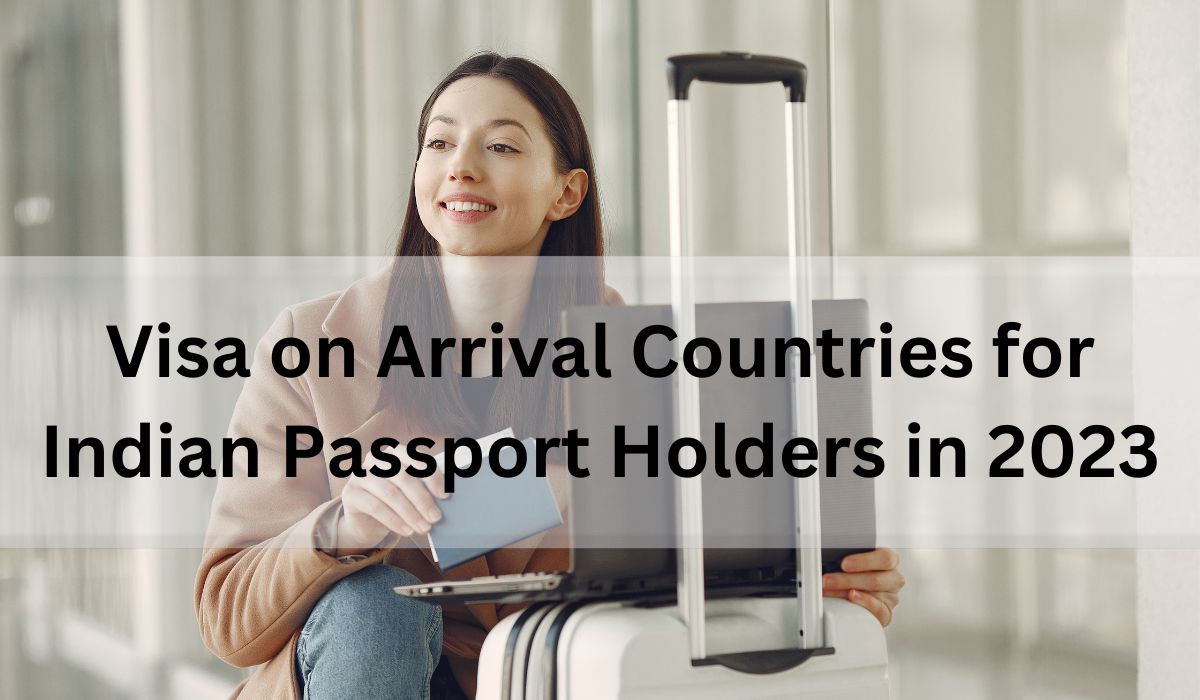Visa on Arrival Countries for Indian Passport Holders in 2023

In the ever-expanding world of international travel, Indian passport holders have seen significant improvements in visa accessibility. With the release of the Henley Passport Index 2023, Indian passport holders have reason to celebrate, as India’s passport ranking has surged from 87th place in 2022 to an impressive 80th place in 2023. This upswing grants Indian passport holders visa-free access to 57 countries, greatly simplifying global travel. In addition to visa-free access, there are also numerous countries that offer the coveted “visa on arrival” option, allowing travelers to bypass the complexities of pre-approved visas.
In this comprehensive guide, we will explore the list of countries offering visa on arrival for Indian passport holders in 2023, clarify the process of obtaining one, and differentiate between visa on arrival and visa-free travel.
List of Countries Offering Visa-on-Arrival for Indians in 2023:
- Bolivia: 90 days (South America)
- Burundi: 30 days (Africa)
- Cambodia: 30 days (Asia)
- Cape Verde: 90 days (Africa)
- Comoros: 45 days (Africa)
- Guinea-Bissau: 90 days (Africa)
- Indonesia: 30 days (Asia)
- Jordan: 30 days (Asia)
- Laos: 30 days (Asia)
- Madagascar: 90 days (Africa)
- Maldives: 30 days (Asia)
- Marshall Islands: 90 days (Oceania)
The Process of Visa on Arrival for Indians
Obtaining a visa on arrival is a relatively straightforward process, although it can vary slightly from country to country. Here is a simplified step-by-step guide:
- Complete Arrival Card: Most countries require travelers to fill out an arrival card, which typically includes essential details such as your name, passport number, purpose of the visit, and intended duration of stay.
- Prepare Documentation: Ensure you have all necessary documents, including a valid passport (with at least six months of validity from your intended departure date), proof of sufficient funds, a return or onward flight ticket, and, sometimes, a passport-sized photograph.
- Arrival at Destination: Upon arrival at your destination airport, proceed to the visa on arrival counter, usually located in the immigration section.
- Visa Application: Fill out the visa application form provided at the counter. You may also need to provide supporting documents such as hotel reservations or proof of funds.
- Payment of Visa Fees: Pay the applicable visa fees, which can vary based on the country and the duration of your stay. Fees are usually payable in the local currency or sometimes in US Dollars.
- Visa Issuance: Once your application and payment are processed, immigration authorities will issue your visa on the spot. Ensure that all the details on your visa sticker are accurate before leaving the counter.
- Duration of Stay: Be aware of the maximum stay duration allowed on your visa, as overstaying your visa may result in fines or other legal consequences.
With a visa on arrival in hand, you’re ready to explore your destination hassle-free. Enjoy your journey, and remember to comply with local laws and regulations.
Distinctions Between Visa on Arrival and Visa-Free Travel
While both visa on arrival and visa-free travel for Indians offer the convenience of traveling without a pre-approved visa, they differ in several key aspects:
- Visa on Arrival: Requires filling out an application, providing necessary documents, and often paying a visa fee. Stay duration varies by country, and overstaying can result in fines or penalties.
- Visa-Free Travel: Requires no prior application, fee payment, or paperwork. The allowed stay duration often varies by country and is determined by bilateral agreements. Overstaying may result in fines or deportation. A valid passport and meeting entry requirements are still necessary.
In summary, both options offer travel convenience, but visa-free entry is often simpler, as it involves no additional paperwork or fees. However, specific requirements can vary from country to country, so it’s essential to research and confirm the prerequisites before your trip.
FAQs
Q.1. Is a visa on arrival the same as a tourist visa?
Ans. No, a visa on arrival differs from a tourist visa in several ways. While a tourist visa requires advance application through embassies, a visa on arrival is acquired directly at your destination’s airport or border upon arrival.
Q.2. Are visa on arrival policies subject to change?
Ans. Yes, visa on arrival policies can change over time due to international agreements or changes in a country’s immigration regulations. Checking the latest requirements before traveling is recommended.
Q.3. Can I extend my stay on a visa on arrival?
Ans. In some cases, you may be able to extend your stay by visiting the local immigration office of the country you are in. However, this is subject to the specific rules of each country.
Q.4. Are there any additional fees for visa on arrival besides the visa fee?
Ans. Some countries may impose additional charges or fees upon arrival. These fees may include tourism taxes, entry fees, or other expenses specific to the country you’re visiting. Be prepared by carrying local currency and inquiring about potential additional fees upon arrival.
For personalized assistance in handling your passport and visa needs, including visa on arrival inquiries and applications, consider reaching out to a professional passport agent. Their expertise can make your travel experience even more seamless.
In the ever-evolving landscape of global travel, Indian passport holders now have more opportunities to explore the world with ease, thanks to the increasing availability of visa on arrival options. These provisions not only simplify the process but also provide a broader scope for international travel. It’s time to plan your next adventure!
Leave a Reply